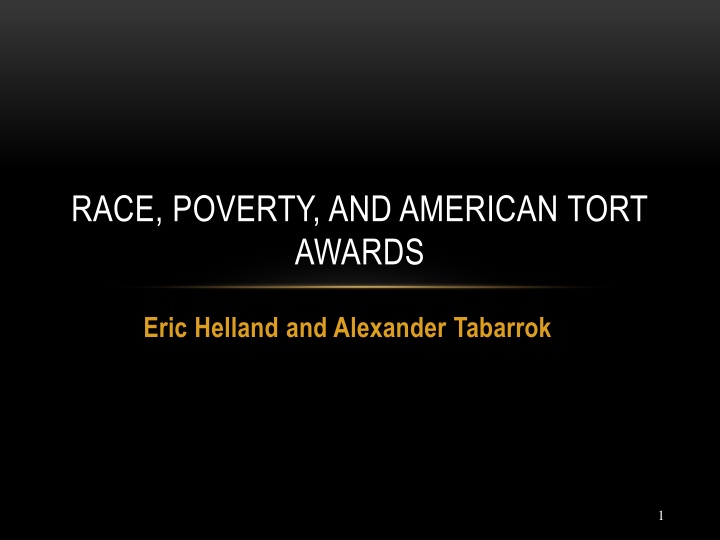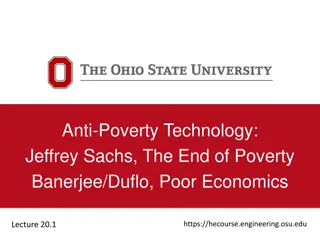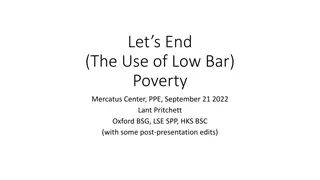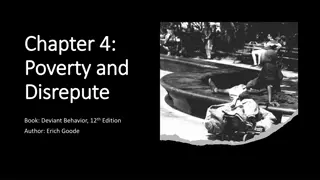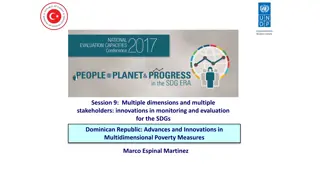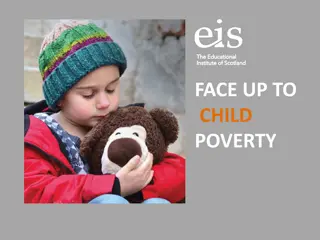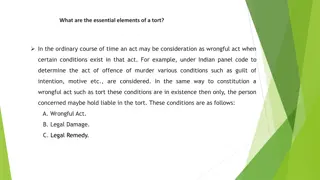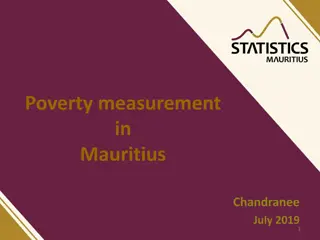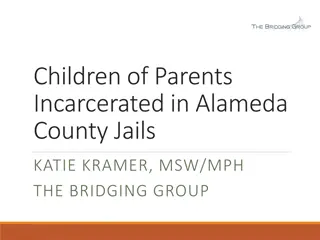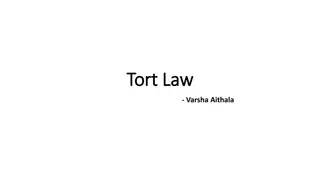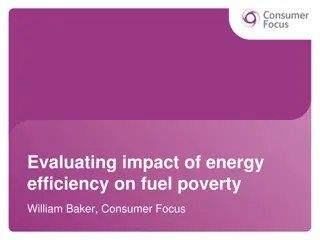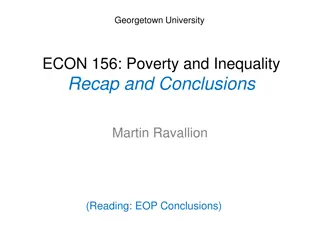Race, Poverty, and American Tort Awards: Examining County Demographics in Legal Cases
This study delves into the impact of race and poverty on tort awards, focusing on cases in Jefferson County, Mississippi. It analyzes data from JVR and Civil Justice Survey to understand how county demographics influence legal outcomes and award amounts.
Download Presentation

Please find below an Image/Link to download the presentation.
The content on the website is provided AS IS for your information and personal use only. It may not be sold, licensed, or shared on other websites without obtaining consent from the author.If you encounter any issues during the download, it is possible that the publisher has removed the file from their server.
You are allowed to download the files provided on this website for personal or commercial use, subject to the condition that they are used lawfully. All files are the property of their respective owners.
The content on the website is provided AS IS for your information and personal use only. It may not be sold, licensed, or shared on other websites without obtaining consent from the author.
E N D
Presentation Transcript
RACE, POVERTY, AND AMERICAN TORT AWARDS Eric Helland and Alexander Tabarrok 1
RACE, POVERTY, AND AMERICAN TORT AWARDS Television journalist Morley Safer of CBS s 60 Minutesintroduced Jackpot Justice, a story about the tort system, this way: It s been nicknamed Jackpot Justice. It s about where lawyers like to go when they sue big corporations for personal injury. It s not to the big cities where the corporations are headquartered but to places like, for example, rural, impoverished, Jefferson county, Mississippi. Why Mississippi? Well plaintiffs lawyers have found that juries in rural impoverished places can be mighty sympathetic when one of their own goes up against a big, rich multinational corporation. Jefferson County, Mississippi, is a small, poor, rural county with a population of just over nine thousand; 86.5 percent of the population is black and more than one-third of the county population lives below the poverty line. Despite its small size, Jefferson County is home to lots of lawsuits. Between 1995 and 2000, more than 21,000 lawsuits were filed in Jefferson County an average of two suits per person! A number of these suits and settlements have resulted in multi-million dollar awards leading some to call Jefferson County a lawsuit Mecca. Can we put some hard numbers on these anecdotes? 2
THE DATA: JVR The primary data set is from Jury Verdict Research's Personal Injury Verdicts and Settlements. The JVR data set contains information on 122,444 cases disposed of between 1988 and 1996. (All award amounts in 1996 dollars). Win rates tend towards 50% regardless of jury characteristics, this makes any relationship between win rates and jury demographics very difficult to identify. Thus we focus attention on the 42,315 trials resulting in a plaintiff win these cover 1803 counties. The JVR data contains information on the case type and on the plaintiff's injuries. The bulk (75%) of the cases are in auto (51%), premises liability (14%) medical malpractice (7%), or product liability (4%) cases. We exclude cases in the JVR data that were tried before a judge. 3
JVR DATA JVR bases most of its results on court reporters. A potential problem, however, is that JVR also surveys newspapers to collect information on cases which it might have missed in its survey of court reporters. Since our focus is the change in tort awards induced by a change in county demographics, oversampling of large awards does not present a problem. Indeed, to the extent that large awards are a subject of particular concern, any oversampling can be beneficial. Without qualification, however, the average awards in this study should not be taken to represent population averages. 4
DATA: CIVIL JUSTICE SURVEY OF STATE COURTS To verify results from the JVR data set we examine two other data sets: State Court and Federal data. The State Court data set is slightly broader than the JVR data set as it covers tort, contract and real property cases. All cases are disposed of between July 1, 1991 and June 30, 1992 in 45 counties chosen to represent the 75 most populous counties in the nation. The State Court data set has information on 3199 trials with positive awards. It does not contain the extensive injury information found in the JVR data. The main defect of the data set is its relatively small size. The advantage of the State Court data, however, is that it is a true random sample of trial awards. 5
FEDERAL COURT DATA The second supplementary data set covers Federal court cases. Federal courts draw juries from districts and divisions within districts rather than by county. We call the geographic area from which a federal trial draws a jury a "trial unit." Trial units can range from single counties to subsets of counties to entire states. Trial units, however, never divide a county. Thus, using demographic data on counties, we can aggregate up to create a population weighted demographic dataset on each Federal trial unit. We restrict the Federal data set to cases broadly similar in type to those in the JVR and State Court data sets -personal injury torts and contract disputes (13,199 cases). We exclude cases which are tried before a judge. Federal cases are likely to be quite different than state court cases. In addition, our unit of analysis in the Federal data, the district, is different than the county. We should not necessarily expect the coefficients to be the same size in all three data sets but we would the same signs. 6
DATA We supplement the data on trials with data on county demographics drawn from the 1990 census. The most important limitation of the data sets is that we do not have data on the race of the plaintiff and we must infer the average composition of the jury from county demographics. The latter issue is not a problem as long as there is a positive relationship between county and jury demographics. The correlation between county and jury demographics also implies a correlation between county and plaintiff demographics. Thus, we will not be able to completely distinguish interaction effects and pure jury demographic effects. 7
EXPLORING THE DATA Table 1: We split the trials awards into divisions according to the poverty rate of the county in which the trial occurred. All trial awards that occurred in a county with a poverty rate of between 0 and 5% are in division 1, trial awards that occurred in a county with a poverty rate of between 5 and 10% are in division 2 and so forth. The data show a marked increase in award by poverty rate. As the average county poverty rate increases from 4.1% to 21.9%, for example, the average award triples from just over $400 thousand to just over $1.3 million. The poverty rate is defined as the number of persons in poverty in the county identified by the 1990 census divided by the county population in 1990. 8
Table 1: Mean Tort Awards by Poverty Rate, JVR Data Poverty Range Mean Poverty Rate in Range Mean Award No. Observations 2714 10,373 16,018 8915 3150 1031 114 42,315 0-5% 5-10% 10-15% 15-20% 20-25% 25-35% 35%+ 0-100% 4.1% 7.5% 12.5% 17.4% 21.9% 27.8% 40% 12.8% $398,874 $470,875 $647,882 $670,597 $1,185,010 $1,185,630 $2,661,910 $651,241 9
EXPLORING THE DATA Tables 2 and 3 report the same experiment using the State and Federal court data respectively. Since the State Court data covers fewer counties the range on poverty is lower as is the poverty range across the Federal districts. Although the average awards tend to be lower than in the State Court data than in the JVR data set it is clear that the rate of increase with respect to poverty is similar. The Federal Court data is more tentative; although some increase in awards with poverty is seen, especially at higher poverty levels the average award is surprisingly low in some mid-poverty districts. 10
Table 2: Mean Tort Awards by Poverty Rate, State Court Data, 1996 Dollars Poverty Range Mean Poverty Rate in Range 0-5% 3.6% 5-10% 7.6% 10-15% 13.1% 15-20% 17% 20-25% 20.4% 0-100% 12.8% Mean Award No. Observations $125,102 $255,759 $546,807 $663,378 $756,793 $494,470 202 874 936 629 488 3129 11
Table 3: Mean Tort Awards by Poverty Rate, Federal Court Data, 1996 Dollars Poverty Range Mean Poverty Rate in Range 5-10% 8.9% 10-15% 11.8% 15-20% 17% 20-25% 21.7% 25-100% 26.3 0-100% 12.36% Mean Award No. Observations $1,536,900 $848,150 $1,610,100 $1,717,740 $1,848,750 $1,237,020 4115 6189 2151 652 92 13,199 12
Mean Trial Awards Increase in County Poverty Rates 1000 1500 2000 2500 Mean Trial Award (in $1000) 500 0 0 10 20 30 40 County Poverty Rate (%) JVRAwards FedAwards SCAwards Source: Helland and Tabarrok (2003) 13
Table 4: Regression Results, Total Awards on Poverty, JVR and State Court Data JVR Data State Court Data Constant 194,451 (37,189)* (177,900) Poverty Rate 35,322 (2635)* (12,786)* Observations 42,315 3,129 * Significant at the greater than 1% level Federal Court Data 1,143,024 (73,314)* 6,435 (5,664) 13,199 58,911 33,770 14
EXPLORING THE DATA Examining the JVR data in another way, Figure 2 plots a kernel density estimate of the logged award distribution for low (0- 5%), medium (20-25%) and high (35%+) poverty counties. Using the kernel densities, we can calculate the probability that an award, in this sample of cases, will be 1 million dollars or larger. The probability is 10%, 20%, and 35% in low, medium, and high poverty counties respectively. 15
EXPLORING THE DATA Table 5 breaks the data down into product liability, medical malpractice and auto cases. Poverty increases awards much more in product liability cases and medical malpractice cases than in auto cases. Not only are awards higher in product liability and medical malpractice cases, but the rate of increase of awards with respect to county poverty is larger. An alternative way of stating the results of Table 4 and Figure 3 is that the markup for product liability and medical malpractice cases is much smaller in low poverty counties than in high poverty counties. 17
Table 5: Mean Awards by County Poverty Rate in Product Liability, Medical Malpractice and Auto Cases, JVR Data Product Liability Poverty Range Mean Obs 0-5% $1,183,410 57 5-10% $2,279,620 313 10-15% $1,929,380 675 15-20% $2,485,990 512 20-25% $4,279,320 138 25%+ $6,743,680 45 0-100% $2,441,440 1769 Med. Malpractice Auto Cases Mean $1,077,330 262 $1,480,071 601 $1,806,510 1083 $1,811,420 559 $3,105,800 272 $4,001,020 72 $1,851,190 2849 Obs Mean $243,670 1590 $228,613 5797 $280,056 8124 $240,540 4103 $544,865 1414 $759,719 525 $285,069 21,553 Obs 18
Mean Trial Awards by County Poverty Rate in Product Liability, Medical Malpractice and Auto Cases (in $1000) 8000 6000 Mean Trial Award 4000 2000 0 0 10 20 30 40 County Poverty Rate (%) AllAwards MedAward ProdAward AutoAward Source: Helland and Tabarrok (2003) 19
RACE AND POVERTY Due to the high rate of poverty among blacks, black population rates and all-population poverty-rates are highly correlated. To a lesser but still significant extent, Hispanic population rates and all- population poverty rates are also correlated. Poverty may be to narrow a variable and is picking up results more properly ascribed to black and/or Hispanic populations of all income levels. Or, it may be that poverty is too broad a variable and that it is picking up results more properly ascribed to low-income black or Hispanic populations. Important Point: One would expect that awards would fall with an increase in county poverty because wages are lower in counties with high poverty levels and compensatory awards should fall with a fall in wages. 20
INJURIES, CASE TYPES, CITIES, AND FIXED EFFECTS The JVR data set has descriptive information on the victim's physical injury and case type For a variety of reasons we might expect awards to be higher in urban counties or counties that include cities. State fixed effects are dummy variables specific to each state. 21
Table 7: Regression of Total Award on State Fixed Effects, Injury Variables, Case Types, Population Density, and White, Black and Hispanic Poverty 1) JVR Data1 3) State Court Data2 5) Federal Court Data3 White Poverty Rate -8,644* (2,876) -18,199 (30,634) 19,665** (8.209) Black Poverty Rate 19,838* (6,762) 74,991* (21,447) 18,875* (10,152) Hispanic. Poverty Rate 78,588* (15,708) -106,159 (68,608) 12,344 (27,405) Obs. 41,150 3,106 4,784 * Significant at greater than 1% level. **Significant at greater than 5% level. ***Significant at greater than 10% level. 1. Full Results for this model may be found in Table A1, results on other models are similar. 2. Includes a less extensive set of injury variables than the JVR data also includes case types, density, and state fixed effects. Full Results for this model may be found in Appendix A2. 3. Does not include injury variables but does include case types, district densities and year dummy variables. Standard errors are robust (heterosecadastic-consistent). All awards in real 1996 dollars 22
SUMMARY OF RESULTS SO FAR The evidence from all three data sets indicates that absolute awards increase with black poverty rates. The finding is even more dramatic when considered in the light of the decrease in awards that occurs with increase in white poverty rates. Awards also increase with Hispanic poverty rates in the JVR and State court data, although the coefficient in the Federal awards regression is negative. 23
RACE, POVERTY AND SETTLEMENT AMOUNTS We have data on 26,200 settlement awards from the JVR data set (neither the State Court nor Federal data set include data on settlement amounts). A 1% increase in black poverty rates increases settlement awards by an estimated 21 thousand dollars while the same increase in Hispanic poverty rates increases settlement amounts by approximately 8 thousand dollars. We have also examined win rates and settlement rates using Probit regressions but in all cases the effect of the various poverty rates was negligible. Thus we find that the main effects of poverty rates occurs on awards. 24
Table 8: Regression of Settlement Amounts on State Fixed Effects1, Injury Variables, Case Types, Population Density, and White, Black and Hispanic Poverty Variables 1) JVR Data White Poverty Rate 1,137 (2,776) Black Poverty Rate 20,992* (3,334) Hispanic. Poverty Rate (3,654) Observations 26,200 * Significant at the greater than 1% level. **Significant at the greater than 5% level. ***Significant at the greater than 10% level. 1) Due to small samples, it was not possible to estimate state fixed effects for every state. Dummy variables for the five states with the fewest observations, HI, NV, OR, AK, VT were submerged into a constant term. 2) All awards in real 1996 dollars 8,369** 25
CONCLUSIONS The results from all three of our data sets indicate that awards fall with white poverty levels but increase dramatically with black poverty rates. Awards also appear to increase with Hispanic poverty rates although the evidence is less clear. In product liability and medical malpractice cases, the effect of county poverty is even larger. Awards increase with black and Hispanic county poverty rates even after controlling for a wide variety of other potential causes. 26
CONCLUSIONS One potential explanation of our results is that poor black and Hispanic jurors decide cases differently than white jurors of all poverty levels. Given the different life-experiences of poor black and Hispanic jury members, relative to whites of all poverty levels, it appears plausible that the decisions of such jurors about justice and due compensation could differ significantly from those of other jurors. 27
